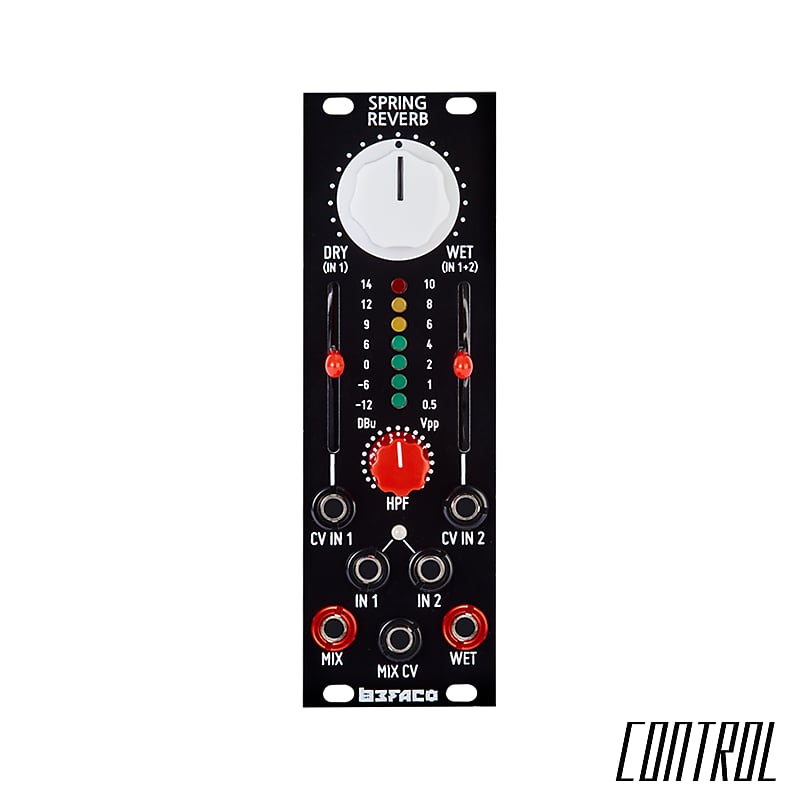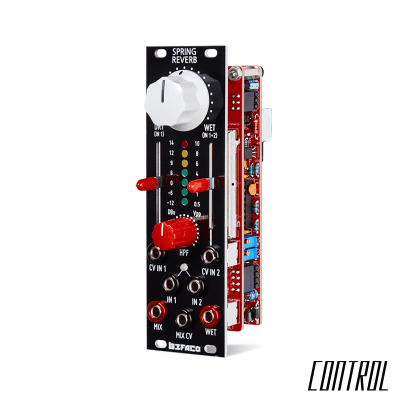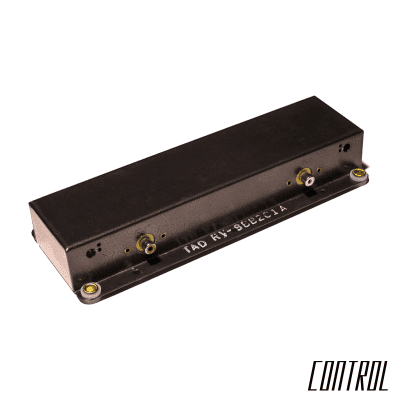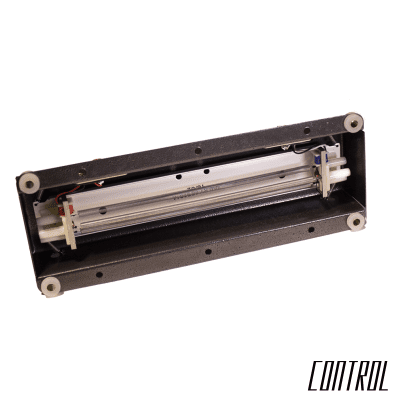Includes Reverb Tank
This is our take on an analog spring reverb module. Featuring VCAs for the two available inputs (with different routing), CV control for DRY/WET and visual feedback for signal levels at input and output of the tank.
Reverberation can be defined as the sum of all the reflections created from an initial sound source within a space, at a point within that space, over time.
To simulate this effect we can pass a sound through a spring with two transducers at either end. As the sound propagates it will cause the spring to expand and contract, creating a series of reflections that are picked up by the transducers (along with the original sound). This creates a simulation of reverberation with (in the case of spring of the reverb) a characteristic and classic colour.
Electronically generated audio will usually sound starkly different to acoustically generated sound. This is more-often-than-not a desirable thing, but there are times when you might want to bring the “depth” of an acoustic environment back into your mix.
The obvious difference between acoustic and synthesised sounds is that acoustic instruments have resonators, and exist in reverberant spaces. One way to add depth to an electronic sound is to somehow simulate the characteristics of a space, and mix this with the original signal.





